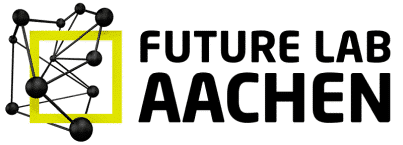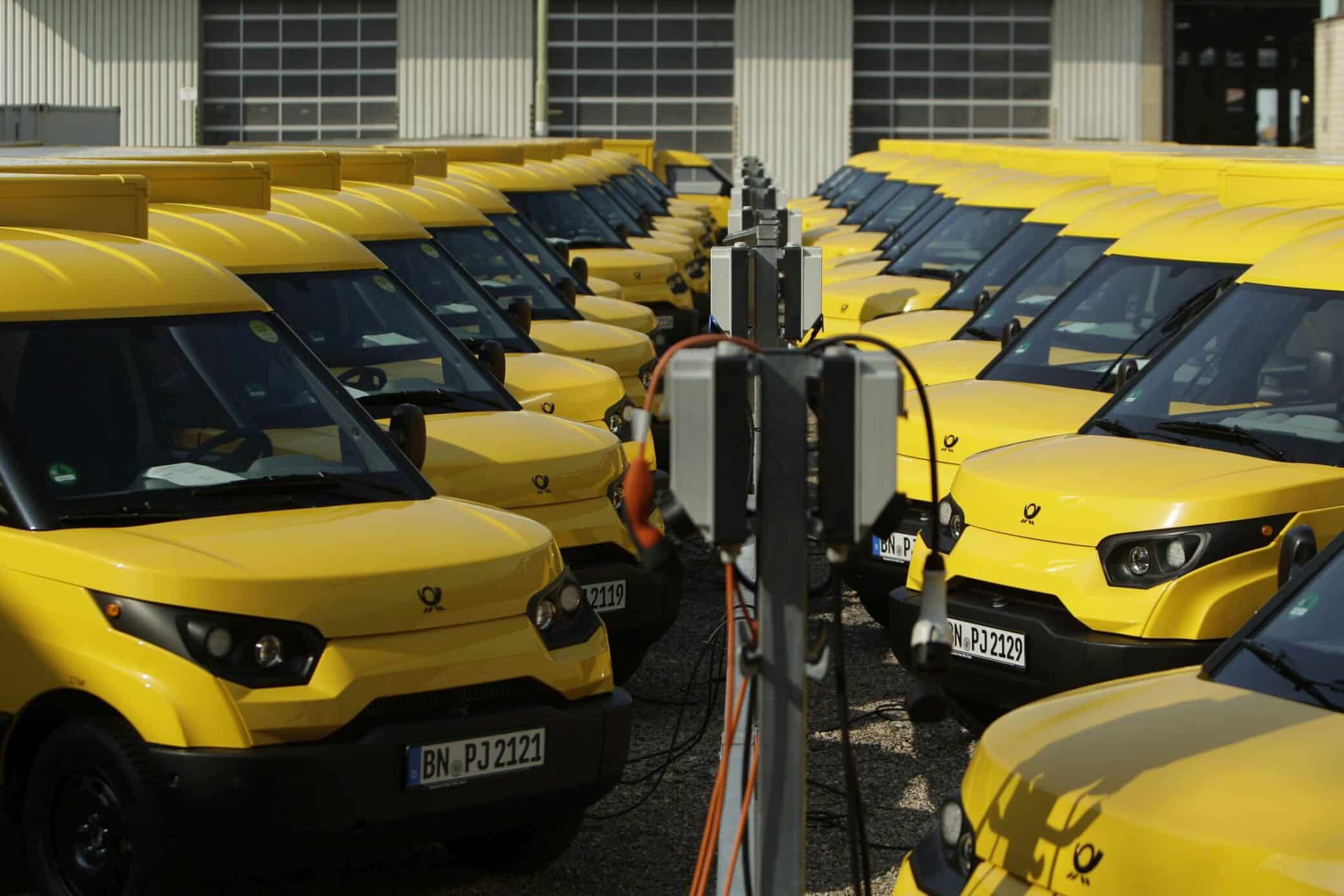In April 2016, the German Post announced that it was starting on the serial production of the StreetScooter model “Work”. By the end of the year, 2,000 electric vans had already rolled off the line. The long-term goal is to replace the complete fleet of 70,000 delivery vehicles with the electric vans. A unique story that began at the RWTH Aachen University. And Günther Schuh knows all the details….
FutureMag: Professor Schuh, when did the idea arise of building an electric delivery van?
Schuh: In October 2006, we started work in the excellence cluster “Integrative Production Technology for High-Wage Countries”. We were looking for a suitable example of the sort of industrially manufactured products that could be produced – with an international competitive edge – here in Germany or in other high-wage countries. At that time, most people thought that electric cars would cost twice as much as conventional automobiles. In addition to the restricted range and compromised comfort of such vehicles, they expected the sheer high price of electro-mobility to impede its success. And it really looked like it was true. The Tesla S was supposed to conquer the Californian market. At 100,000 euros per car! Such high-priced products do indeed generate great public interest, but they don’t do much for the mass market. What we need are reasonably priced, affordable electric cars.
For a passionate production engineer, the research issue took no time at all to formulate: “Is it possible with today’s technology to produce an electric car so cheaply that the total cost of ownership at least matches if not undercuts that of a comparable internal combustion vehicle?” And that’s how the idea of the StreetScooter was born.
FutureMag: How was the project implemented?
Schuh: Well, the concept was prepared in 2008 and 2009. With an initial budget of 50,000 euros. The specific objective was to create a prototype for mass production. The concept and the budget plan were quickly drawn up. Excluding battery and value added tax, the production costs had to be below 5,000 euros; including battery and VAT not more than 10,000 euros if possible. However, because of the funding required, the actual realisation of the prototype could not be carried out in the cluster.
FutureMag: Was that a setback?
Schuh: No, not at all. But at that time I was already busy with the development of the RWTH Aachen Campus GmbH. Around the same time, I also assumed the position of Vice-Rector for Industry and Business Relations at the RWTH. In that role, I obviously had to get even more involved in the development of the new campus. So I looked around for a suitable project manager with the necessary drive and determination to forge ahead with the StreetScooter project and make it a success. I called my former executive chief engineer Achim Kampker – who was, in the meantime, the successful managing director of an automotive supplier company – and asked him to come back. He accepted the challenge and came back to Aachen the same year and assumed a professorship. I handed the project and the role of project manager over to him.
Chancellor Merkel said “Keep it up!”
FutureMag: So the project got back under steam – how long did it take you to realise the prototype?
Schuh: We founded the company StreetScooter GmbH in 2010 and formed a consortium with the RWTH, other research institutes and about 80 SMEs. When Professor Kampker took over, the first prototype had already been drawn and detailed in a virtual model. In just 15 more months, Professor Kampker and the consortium completed the prototype.
FutureMag: That’s proof of close, interdisciplinary cooperation and the high performance potential of a consortium.
Schuh: It definitely is. A leading role was played by the electrical engineers under the professors De Doncker, Harmeyer Sauer, who we brought on board at a very early stage of the project in order to press ahead with the issues of battery and drive train.
Professor Gies, at that time Head of IKA Institute, constructed the first StreetScooter, the Compact (A12) model – which is exhibited today in the Demonstration Factory on the RWTH Aachen Campus. The technical specifications came from the WZL. In 2011, the A12 was premiered at the IAA in Frankfurt. Chancellor Merkel encouraged Professor Kampker with the words: “Keep it up!”
FutureMag: What was the reaction of the automotive branch after the IAA?
Schuh: Well, the prototype certainly attracted attention. After the presentation we were all in high spirits and very motivated. As researchers, we had supplied the production-engineering proof that we could produce the car at the target costs. The automotive branch gave it a quick glance, but they didn’t believe us.
FutureMag: And then the German Post got wind of it.
Schuh: Yes, their query came from the managing director Jürgen Gerdes and from his department head Uwe Brings. They were fascinated by the concept of “design to cost engineering” and wanted to know whether the idea could also be applied to an electric van for letter and parcel delivery. As a result, StreetScooter then developed the “Work” model.
To meet the special requirements of letter and parcel delivery, Professor Kampker brought numerous experts and delivery agents on board. About 100 of them worked we us as developers, so to speak. Specific requirements regarding the material to be used had to be taken into consideration. How will the door open? How will people get in and out of the vehicle? How will it be loaded and unloaded? This was a part of the puzzle that was crucial for the success of the concept. In 2013, the first 50 “Work” vans were built and put through availability testing. The test results indicated an amazing 93% availability!
After that, the mood in the German Post changed from still somewhat sceptical to sometimes almost ecstatic, and we received the first further advances from the German Post. In 2014, we set out to find investors to help finance our serial production. The German Post wanted to ensure the controlling interest in the start-up they had funded.
At first, the automotive branch stuck us in the “Youth researches” pigeonhole.
FutureMag: After the further development stage with the German Post, weren’t there any other classic OEMs signalling their interest?
Schuh: Well, after the automotive branch had provisionally stuck us in the “Youth researches” pigeonhole following the IAA, we did in fact get a signal of interest from one major car manufacturer. But the negotiations were tedious and drawn-out. In comparison, the German Post was considerable more dynamic and faster.
And so, in December 2014, the German Post announced the integration of the company StreetScooter GmbH into the concern as a subsidiary. Professor Kampker remained the CEO of StreetScooter and at the same time became the new head of the Department of Electromobility at the German Post.
Just let me make one thing very clear: StreetScooter’s success is primarily due to Professor Kampker, who did an amazing job in accomplishing the objectives of the project.
FutureMag: What happened to the idea of the two-seater?
Schuh: As you can imagine, further development was going on the whole time. There were ideas for a MicroCar (C16), even smaller than the Compact, which was developed in a side-project, mainly with student assistants. The German Post wasn’t interested in vehicles for passenger transport, and we weren’t interested in goods transport. So several ideas from StreetScooter GmbH were not sold on to the German Post as part of the takeover.
Earlier on, I had already given much thought to what we needed to have in our German innovation landscape in order to transfer the high degree of invention potential out of our universities and into more “real” innovations. The RWTH Aachen Campus designed to pursue this quest to bring research competence closer to innovation capability. That’s why, for the Prototype C16, we have taken along a controllable technology and platform in order to further demonstrate the innovative capability to be found on the RWTH Aachen Campus in an agile environment with a range of different players.
Six weeks after the German Post took over StreetScooter, we founded the company e.GO mobile AG and further developed the MicroCar (C16) into the e.GO Life, which was presented in July 2016 and is scheduled to go into serial production in February 2018.
If our e.GO Life does well on the market, we could imagine the mass production of up to 10,000 vehicles per year, preferably in Aachen.
FutureMag: So your dream of building a car of the future has come true?
Schuh (smiling): Well, I guess you could say that!



